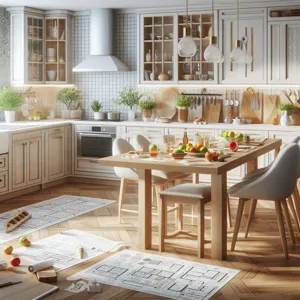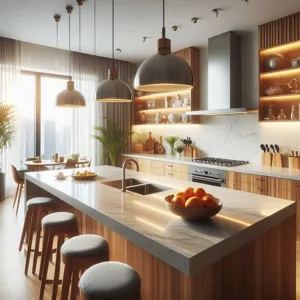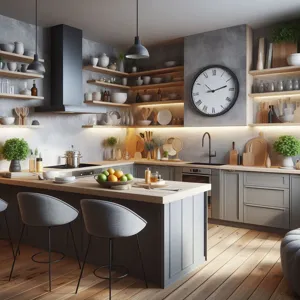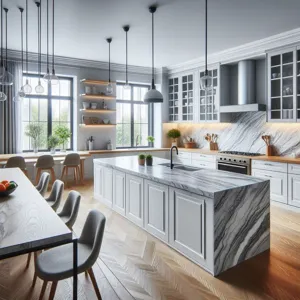In the realm of storytelling, the transition from page to screen can be a delicate dance between preserving the essence of the original narrative and crafting a compelling cinematic experience.
The concepts of faith and fidelity come into play as filmmakers navigate the intricate art of adaptation, balancing the integrity of the source material with the demands of the film medium. Whether it’s a beloved novel, a classic play, or a poignant short story, the challenge lies in capturing the heart of the narrative while making it resonate with a new audience. In this blog post, we will explore the nuanced relationship between faithfulness to the original work and the creative liberties that can lead to a fresh interpretation. Join us as we delve into the techniques and philosophies behind successful adaptations, examining how filmmakers honor the spirit of the story while forging their own artistic path.
1. Understanding Faithfulness in Adaptation

Understanding faithfulness in adaptation is the cornerstone of translating a beloved narrative from its original medium to the screen. At its essence, faithfulness refers to the degree to which an adaptation honors the source material—be it a novel, play, or even a video game—while also making necessary adjustments for the unique demands of cinema. This intricate dance between staying true to the original story and embracing the creative liberties of film can often define the success or failure of an adaptation.
To begin with, it’s crucial to assess what aspects of the original work are most vital to its identity. Is it the plot, character development, thematic depth, or perhaps the distinctive voice of the narrator? Filmmakers must discern which elements resonate most with the audience. A faithful adaptation often retains key plot points and character arcs that fans have come to cherish. However, it also requires an understanding that what works on the page may not translate seamlessly to the screen. For instance, the internal monologues that provide rich insight into a character’s psyche in a novel may need to be conveyed through visual storytelling techniques, such as expressive cinematography or nuanced performances.
Moreover, faithfulness does not imply mere replication; it entails a thoughtful interpretation of the original material. Successful adaptations often introduce new perspectives or recontextualize elements to enhance the narrative for a different audience. This could mean altering a character’s backstory to align with contemporary values or reimagining certain scenes to evoke a more powerful emotional response. Ultimately, the goal is to create a film that resonates with both fans of the original work and new viewers, striking a delicate balance between reverence and innovation.
In conclusion, understanding faithfulness in adaptation is about more than just adhering to the source material; it involves a deep appreciation for the story’s essence while embracing the transformative nature of film. By navigating this complex landscape with care and creativity, filmmakers can craft adaptations that honor their origins while captivating audiences in entirely new ways.
2. The Role of Fidelity in Storytelling
Fidelity in storytelling refers to the commitment to preserving the core elements and spirit of the original narrative when adapting it for the screen. This fidelity can be a double-edged sword; while it pays homage to the source material, it can also constrain the creative process. A faithful adaptation seeks to honor the author’s intent, character development, and thematic depth, ensuring that the essence of the narrative resonates with both existing fans and new audiences alike.
Consider the challenge faced by filmmakers who adapt beloved novels. They often grapple with the expectations of fans who have formed deep emotional connections with the characters and storyline. For instance, when adapting a complex literary work, fidelity might dictate that key scenes, dialogue, and character arcs remain intact. This can enhance authenticity and allow the audience to experience familiar touchstones that evoke nostalgia. However, the time constraints of a film format can necessitate the omission or alteration of certain elements, which might lead to tensions between fidelity and the practicalities of cinematic storytelling.
Moreover, fidelity is not just about keeping the content unchanged; it also involves translating the original work’s tone and atmosphere to suit the visual medium. The color palettes, sound design, and cinematography must reflect the emotional landscape of the source material. A film adaptation of a dark, brooding novel may employ shadowy visuals and a haunting score to preserve the story’s intensity, while a light-hearted romance might focus on vibrant colors and cheerful music to capture its playful spirit.
Ultimately, the role of fidelity in storytelling is about balancing respect for the original narrative with the creative liberties required to make it shine in a new form. Successful adaptations find ways to maintain the integrity of the story while embracing the unique possibilities of the screen, inviting viewers into a world that feels both familiar and fresh. In this delicate dance between faithfulness and innovation, filmmakers craft a cinematic experience that resonates deeply, ensuring that the heart of the original story continues to beat strong for generations to come.
3. Key Differences: Faith vs. Fidelity

When it comes to adapting stories for the screen, understanding the distinction between faith and fidelity is crucial for creators who wish to honor the source material while also crafting a compelling cinematic experience.
**Faith** in adaptation refers to the commitment to the core essence and themes of the original narrative. It’s about respecting the spirit of the story and ensuring that the emotional and philosophical undercurrents remain intact. A filmmaker who approaches their work with faith seeks to capture the heart of the original story, even if the details or context are altered. For instance, a beloved novel might be set in a different time period or feature a diverse cast, but as long as the central message and character arcs resonate with the audience, the adaptation can be considered faithful to its core.
On the other hand, **fidelity** involves a more literal interpretation of the source material. This means adhering closely to the plot, dialogue, and character development as they appear in the original work. While fidelity can be appealing to purists who want to see their favorite stories presented as closely to their original form as possible, it can also lead to challenges. Screenplays require different pacing and structure than novels; what works beautifully in prose may fall flat on screen.
The balance between faith and fidelity is a delicate dance for screenwriters and directors. An adaptation that leans too heavily on fidelity may result in a stagnated narrative that fails to engage the audience, while one that embraces faith allows for creativity and innovation, breathing new life into familiar tales. The art of adaptation lies in finding that sweet spot where the essence of the original story shines through, even as it transforms into a new medium. In the end, it’s about telling a story that resonates with both old fans and new audiences alike, making it relevant and impactful in its own right.
4. The Importance of Source Material
When it comes to adapting stories for the screen, the importance of source material cannot be overstated. The original work—whether a novel, play, comic book, or even a historical event—serves as the foundation upon which the film or television adaptation is built. This source material is rich with themes, character arcs, and narrative nuances that provide depth and context, allowing filmmakers to honor the essence of the story while making it accessible to a wider audience.
A well-chosen source material can offer a treasure trove of inspiration, capturing the attention of viewers who may not be familiar with the original work. For instance, when adapting a beloved novel, filmmakers must consider what elements resonate most with readers and how to translate those to a visual medium. This often involves distilling complex inner thoughts into compelling visual storytelling, ensuring that the core emotional beats remain intact while also embracing the cinematic language.
However, the journey from page to screen is not simply a matter of replication; it requires a delicate balance between fidelity to the original and creative interpretation. Filmmakers must navigate the expectations of passionate fans who hold the source material dear, while also recognizing the unique constraints and possibilities that film offers. This means making strategic choices about which plot points to emphasize, which characters to expand upon, and which aspects may need to be altered or omitted for the sake of pacing and coherence.
Ultimately, the importance of source material lies in its ability to serve as both a guiding light and a creative challenge. A successful adaptation honors the spirit of the original while also carving out its own identity, inviting audiences to experience the story in a fresh and engaging way. By respecting the nuances of the source material and embracing the art of adaptation, filmmakers can create a bridge between the two worlds, allowing the story to evolve while still remaining true to its roots.
5. Analyzing Successful Adaptations: Case Studies

When it comes to adapting stories for the screen, the path to success is often paved with careful analysis and strategic choices. Case studies of notable adaptations reveal valuable insights into what makes a successful transition from page to pixel. One of the most celebrated examples is Peter Jackson’s adaptation of J.R.R. Tolkien’s *The Lord of the Rings*. Jackson faced the monumental task of condensing a sprawling epic into a cohesive trilogy. His approach blended fidelity to the original material with creative liberties, allowing him to capture the essence of Tolkien’s world while streamlining the narrative for cinematic pacing. The result? A groundbreaking series that resonated with both die-hard fans and newcomers alike.
Another illuminating case is the adaptation of *The Handmaid’s Tale* by Hulu. Margaret Atwood’s dystopian novel, while rich in detail and character depth, was transformed into a gripping television series that expanded and evolved the original story. Showrunner Bruce Miller skillfully incorporated contemporary themes, allowing the adaptation to converse with current social issues, thereby broadening its appeal and relevance. By diverging from Atwood’s narrative in ways that deepened character arcs and explored new facets of the story, the series not only honored the book but also became a cultural touchstone.
Additionally, the adaptation of *Big Little Lies* showcases how layering complex themes with a strong visual style can elevate the source material. Based on Liane Moriarty’s novel, the HBO series expanded on character backstories and introduced new plotlines that enhanced the emotional depth of the narrative. The collaboration between the author and screenwriter ensured that the adaptation felt fresh and original while still being grounded in the essence of the book.
These case studies illustrate that successful adaptations hinge on a nuanced understanding of the source material, a willingness to innovate, and an acute awareness of the audience’s expectations. Whether through honoring the original story or reimagining it for a new context, these adaptations demonstrate the delicate balance between faithfulness and fidelity — a dynamic interplay that is essential in the art of storytelling across different mediums.
6. The Balance Between Artistic License and Original Intent
In the world of storytelling, the delicate balance between artistic license and original intent is a contentious yet fascinating aspect of adapting narratives for the screen. It is a dance of creativity, where filmmakers and writers must navigate the fine line between honoring the source material and infusing their own vision into the adaptation.
Artistic license allows creators to reimagine elements of a story, to breathe new life into characters, and to explore themes in ways that resonate with contemporary audiences. For instance, a classic novel may be set in a different time period or reinterpreted through a modern lens, leading to fresh insights and heightened emotional impact. However, this freedom can sometimes come at a cost; altering key plot points or character motivations risks alienating devoted fans who hold the original work dear.
Consider the adaptation of beloved literary classics into films. Directors may opt to streamline complex narratives, focusing on specific character arcs or themes while omitting subplots that, while enriching in the original, may detract from the pacing of a cinematic experience. This is not necessarily a detriment; rather, it can highlight the essence of a story in a way that feels both familiar and exciting. Yet, it’s essential to stay true to the core message and spirit of the original work.
To strike the right balance, creators must engage deeply with the source material, understanding not just the plot but the emotions and intentions behind the story. This requires a respectful approach that acknowledges the work’s impact on its audience while also embracing the freedom that film as a medium provides. Ultimately, the art of adaptation lies in crafting a narrative that honors its roots while boldly paving new paths, inviting both fans of the original and new audiences to experience the story afresh.
7. Audience Expectations: What Viewers Want

When it comes to adapting stories for the screen, understanding audience expectations is paramount. Viewers come with a set of preconceived notions, shaped by their experiences and the original material. Whether they’re fans of a beloved book, a classic play, or a historical event, they carry with them a blend of excitement and apprehension about how their cherished narratives will be transformed.
First and foremost, audiences crave authenticity. They want adaptations to honor the essence of the original story, capturing its themes, characters, and emotional core. This doesn’t mean a verbatim retelling; rather, it calls for a deep understanding of what made the original resonate. Viewers may not mind a fresh take or a modern twist, as long as it feels true to the spirit of the source material.
Additionally, pacing is a crucial element that can significantly impact audience reception. Film and television have time constraints that novels and stage plays do not, which can lead to the trimming or reimagining of certain plotlines. While viewers are often willing to accept changes, they expect a coherent narrative flow that keeps them engaged. A well-paced adaptation that balances action and character development can enhance their viewing experience, leaving them satisfied and invested in the story.
Moreover, audiences today are more discerning than ever, actively seeking diverse perspectives and inclusive storytelling. They appreciate when adaptations reflect a wider range of voices and experiences, allowing them to connect with the material on a deeper level. This is an opportunity for creators to not only honor the source material but also to expand its reach and relevance, inviting new audiences into the fold.
In summary, successful adaptations must navigate the delicate balance of respecting original narratives while also meeting the evolving expectations of viewers. By focusing on authenticity, pacing, and inclusivity, creators can craft compelling stories that resonate not just as adaptations, but as standalone works that capture the hearts and minds of their audience.
8. The Impact of Medium: Literature vs. Film
When we delve into the realm of storytelling, the medium through which a narrative is conveyed plays a pivotal role in shaping its essence and impact. Literature and film are two distinct forms of storytelling, each with its unique strengths and limitations. Understanding the nuances of these mediums is essential for adapting stories effectively from one to the other.
Literature offers a rich tapestry of inner thoughts, emotions, and detailed descriptions that allow readers to immerse themselves fully in the characters’ worlds. Through the power of words, authors can explore complex themes, elaborate backstories, and intricate plots that engage the reader’s imagination. A novel invites readers to savor the narrative at their own pace, encouraging deep reflection and personal interpretation. The subtleties of language can evoke powerful imagery and emotions, creating a lasting connection between the reader and the text.
Conversely, film distills these intricate elements into a visual and auditory experience. The immediacy of moving images, coupled with sound and music, creates a visceral impact that can elicit strong emotional responses in a matter of moments. A film adaptation must condense extensive narratives, often sacrificing depth for brevity. This can lead to the loss of nuanced character development or thematic intricacies that were present in the original text. However, film also allows for creative storytelling techniques—such as cinematography, editing, and performance—that can enhance the narrative in ways that words alone cannot.
Moreover, the audience’s engagement differs significantly between the two mediums. In literature, readers actively participate in piecing together the story, filling in gaps with their imagination. In film, the director’s vision dictates how the story unfolds, often leading to a more passive consumption of the narrative. This shift in engagement can alter the audience’s connection to the material, making it crucial for screenwriters and filmmakers to thoughtfully consider what aspects of the story to emphasize.
Ultimately, the impact of the medium can redefine the essence of a story. A successful adaptation must recognize these differences and find a balance between remaining faithful to the original narrative while embracing the unique possibilities that the film medium offers. By navigating this delicate interplay, creators can craft adaptations that resonate with both literature enthusiasts and filmgoers alike, honoring the original work while making it accessible to a new audience.
9. Techniques for Effective Story Adaptation
Adapting a story for the screen is an intricate dance that requires not only creativity but also a profound understanding of both the source material and the medium of film or television. Here are some techniques that can enhance your storytelling prowess when navigating the delicate balance between faithfulness to the original narrative and the need for fidelity to the visual medium.
**1. Identify Core Themes:** The first step in any adaptation is to distill the essence of the original story. What are the central themes, emotions, and conflicts that resonate? By identifying these core elements, you can ensure that the adaptation captures the spirit of the source material, even if certain plot points or characters need to be altered or omitted.
**2. Embrace Visual Storytelling:** Film is a visual medium, and sometimes, what works well in prose doesn’t translate effectively to the screen. Embrace the power of imagery, sound, and movement. Think about how you can convey emotions and narrative through visuals rather than dialogue. This often means reimagining scenes to create a more immersive experience for the audience.
**3. Adjust Pacing and Structure:** Novels and short stories often have different pacing than films. What may work in a book might feel too slow or too rushed in a movie format. Consider restructuring the narrative to maintain a captivating rhythm, ensuring that each scene propels the story forward and keeps the audience engaged.
**4. Develop Characters for the Screen:** Characters that are richly developed in written form may need to be redefined or streamlined for screen adaptations. Focus on their motivations and arcs, ensuring that they translate well visually. This might involve condensing multiple characters into one or emphasizing certain traits that are more relatable or engaging for viewers.
**5. Test Audience Reactions:** Before finalizing your adaptation, consider conducting test screenings or focus groups. Gathering feedback can provide invaluable insights into how the story resonates with an audience, highlighting areas that may need adjustment to better align with viewer expectations and emotional responses.
**6. Respect the Source Material:** While it’s essential to adapt and innovate, maintaining respect for the original work is crucial. Engage with the source material on a deeper level—understand its context, themes, and the author’s intent. This respect will shine through in your adaptation and can help you create a film or series that honors the original story while standing on its own.
By employing these techniques, you can navigate the complex terrain of story adaptation, creating a cinematic experience that resonates with both fans of the original work and new audiences alike. The art of adaptation lies in finding that perfect balance between faithfulness and fidelity, crafting a narrative that honors its roots while embracing the unique possibilities of the screen.
10. Common Pitfalls in Adaptation
When it comes to adapting stories for the screen, navigating the complex landscape of fidelity and faith can be a daunting task. However, the journey is often fraught with common pitfalls that can derail even the most promising projects. Understanding these pitfalls is essential for any screenwriter or director aiming to create a compelling adaptation.
One of the most significant missteps is the tendency to prioritize visual spectacle over narrative depth. While stunning visuals can captivate audiences, a lack of substance can leave viewers feeling unfulfilled. Adaptations that skim the surface of character development and thematic exploration often miss the mark, reducing rich source material to mere eye candy. To avoid this, it’s crucial to extract the core emotional truths of the original story and translate them into the visual medium, ensuring that the heart of the narrative remains intact.
Another frequent challenge arises from the urge to cater too heavily to contemporary audiences. While it’s important to make a story relatable, overhauling key elements to fit current trends can alienate the original fanbase. This may involve altering beloved characters or twisting plotlines in ways that feel disingenuous. Instead, a thoughtful approach that respects the source material while incorporating relevant cultural nuances can create a bridge between old and new audiences.
Moreover, pacing is a critical factor that can easily falter in adaptation. Novels often provide nuances and internal monologues that enhance character motivation, but these subtleties can be challenging to convey in a screenplay. As a result, adaptations may rush through essential plot points or force character arcs into a limited runtime, resulting in a disjointed narrative. Striking a balance between honoring the original work and crafting a coherent, engaging screenplay is key to avoiding this pitfall.
Finally, overlooking the importance of collaboration can lead to a disjointed final product. A successful adaptation often requires the input of various talents – from screenwriters to directors and actors – each bringing their artistic vision to the table. Ignoring collaborative feedback or failing to create a cohesive team dynamic can result in a fragmented story that lacks a unified voice.
In summary, while adaptations can breathe new life into beloved tales, they are not without their challenges. By being mindful of these common pitfalls and approaching the adaptation process with both respect for the source material and an understanding of the cinematic medium, creators can craft stories that resonate with audiences old and new, ensuring that the essence of the original work shines through on screen.
11. The Role of Screenwriters in Faithful Adaptations
Screenwriters play a pivotal role in the delicate balance between faithfulness to the source material and the necessity of adaptation for the screen. When adapting a beloved novel, stage play, or historical account, screenwriters must navigate a labyrinth of expectations, preserving the essence of the original while also accommodating the unique demands of cinematic storytelling.
One of the first challenges a screenwriter faces is distilling the core themes of the original work. This often involves identifying what made the story resonate with its audience in the first place. Is it the character’s journey of self-discovery? The intricate plot twists? Or perhaps the emotional weight of certain relationships? By honing in on these elements, screenwriters can craft a screenplay that echoes the soul of the original, even as it transforms the format.
Moreover, screenwriters must embrace the visual nature of film. What works on the page may not translate effectively to the screen. Dialogue-heavy scenes might need to be reworked to allow for more visual storytelling, using cinematography and acting to convey emotions that words alone once expressed. This adaptation process often leads to creative reinterpretations of scenes, where screenwriters can innovate while still honoring the spirit of the source material.
Collaboration is another key aspect of a screenwriter’s role in faithful adaptations. They must work closely with directors, producers, and sometimes even the original authors to ensure the adaptation respects the narrative while also being viable for audiences. This can be a complex dance, as screenwriters strive to capture the original voice while also injecting their own creative input to make the story fresh and engaging.
Ultimately, the role of screenwriters in faithful adaptations is not just about transferring words from page to screen; it’s about breathing new life into a story, making it accessible and compelling for a new generation of viewers. Through their artistry, they serve as the bridge between the original work and its cinematic interpretation, crafting a narrative that resonates with both long-time fans and newcomers alike. In this intricate balancing act of faith and fidelity, screenwriters become the architects of storytelling, shaping the way stories are experienced in a whole new light.
12. Collaborating with Authors: Building Trust
When it comes to adapting written works for the screen, one of the most critical yet often overlooked aspects is the relationship between filmmakers and authors. Collaborating with the original creators builds a foundation of trust that can significantly enhance the adaptation process. This partnership not only respects the source material but also enriches the narrative, creating a synergy that resonates with both the author’s vision and the filmmakers’ artistic interpretation.
Building this trust begins with open communication. Filmmakers must approach authors with genuine respect for their work, acknowledging the nuances and intricacies that make their stories unique. This means engaging in thoughtful discussions about key themes, character motivations, and the overall tone of the piece. By involving authors in the creative process, filmmakers can glean valuable insights that may not be immediately apparent from the text alone.
Additionally, maintaining transparency throughout the adaptation journey is essential. Authors should feel included and valued, rather than sidelined as mere stakeholders. regular updates, brainstorming sessions, and soliciting their feedback on script drafts can help authors feel invested in the project. This collaborative spirit can lead to innovative solutions to storytelling challenges, resulting in an adaptation that honors the original work while also embracing the visual medium.
Moreover, building trust extends beyond the creative discussions. It involves treating the author fairly in terms of compensation and credit. Recognizing their contributions and ensuring they are properly acknowledged can foster a positive relationship that may open doors for future collaborations.
Ultimately, successful adaptations stem from a foundation of mutual respect and trust between filmmakers and authors. By actively collaborating, both parties can create a more powerful narrative that captivates audiences while preserving the heart of the original story. This art of adaptation becomes a harmonious blend of faith in the source material and fidelity to the storytelling craft.
13. The Evolution of Adaptations in Modern Cinema
The evolution of adaptations in modern cinema is a fascinating journey that reflects societal changes, technological advancements, and shifting audience expectations. Gone are the days when a straightforward retelling of a beloved novel or historical event was enough to capture the hearts of viewers. Today, filmmakers are embracing a more nuanced approach, experimenting with creative liberties that blend fidelity to the source material with innovative storytelling techniques.
This shift is evident in the way classic literature and well-known stories are reimagined for contemporary audiences. For instance, adaptations like “Pride and Prejudice and Zombies” showcase a playful blend of genres, infusing a beloved classic with elements of horror and action. Similarly, films such as “The Great Gatsby” have taken aesthetic and thematic risks, employing modern visual styles and soundtracks that resonate with today’s viewers, while still trying to honor the essence of the original work.
Moreover, the rise of streaming platforms has further transformed the landscape of adaptations. With the freedom to explore longer narratives, series like “The Handmaid’s Tale” have successfully expanded upon their source material, delving deeper into character development and thematic complexities that a two-hour film might struggle to capture. This shift has allowed creators to explore the gray areas of fidelity, giving them the space to reinterpret characters, settings, and plots in ways that both pay homage to and challenge the original narratives.
As technology continues to advance, with CGI and virtual reality offering new storytelling possibilities, the adaptability of stories will only grow. Filmmakers are now tasked with balancing the expectations of purists who crave authenticity with the desires of audiences seeking fresh perspectives and engaging experiences. The modern adaptation is no longer just about retelling a story; it’s an art form that invites reinterpretation, sparking conversations about the essence of storytelling itself. In this dynamic landscape, where faith in the original meets the fidelity of new visions, the evolution of adaptations promises to captivate audiences in ever-evolving ways.
14. The Future of Adaptation: Trends and Innovations
As we look to the horizon of storytelling, the future of adaptation is brimming with exciting trends and innovations that are reshaping how narratives transition from page to screen. With advancements in technology and shifts in audience expectations, filmmakers and writers are exploring new avenues that not only enhance the storytelling experience but also deepen audience engagement.
One prominent trend is the rise of interactive storytelling. Platforms like Netflix have begun experimenting with choose-your-own-adventure formats, allowing viewers to make decisions that influence the narrative direction. This level of interactivity offers a fresh layer of immersion, turning passive viewers into active participants, and challenging creators to rethink how stories are crafted and presented.
Moreover, the evolution of streaming services has fostered a resurgence in serialized adaptations. Unlike traditional films, which often condense complex narratives into two-hour formats, limited series and episodic content allow for deeper character development and more nuanced storytelling. This trend is particularly beneficial for adaptations of intricate novels or expansive franchises, as it gives creators the time and space to explore subplots, themes, and character arcs that would otherwise be glossed over.
Technological innovations are also playing a crucial role in the future of adaptations. With the advent of virtual reality (VR) and augmented reality (AR), stories can now be experienced in immersive, multisensory ways. Imagine stepping into the world of your favorite book, interacting with characters and environments in real-time. This not only redefines the viewer’s experience but also provides new opportunities for creators to engage with their audience on a level previously unimaginable.
Additionally, there is a growing emphasis on diverse storytelling. Audiences are increasingly demanding representations that reflect the rich tapestry of human experiences across cultures, identities, and backgrounds. This shift is prompting creators to adapt stories that resonate with a broader audience, ensuring that narratives are inclusive and reflective of the world we live in.
As we move forward, the art of adaptation will continue to evolve, driven by technological advancements, changing cultural landscapes, and the ever-growing desire for authentic and engaging narratives. By embracing these trends and innovations, storytellers can craft adaptations that not only honor their source material but also captivate and resonate with audiences in profound new ways.
15. Conclusion: Finding the Right Balance in Adaptation
In the realm of storytelling, the transition from page to screen presents a unique set of challenges and opportunities. As we draw this exploration of faith versus fidelity to a close, it becomes clear that the heart of successful adaptations lies in finding the right balance between these two approaches.
Faithfulness to the source material honors the original creator’s vision, capturing the essence of beloved characters and plotlines that resonate with audiences. However, fidelity can also lead to a rigid adherence to the text, potentially stifling creativity and innovation that are vital in the visual medium. On the other hand, embracing artistic license—faith in the new interpretation—can breathe fresh life into a story, allowing it to evolve and connect with viewers in ways that transcend its origins.
Striking this delicate equilibrium requires a deep understanding of both the source material and the nuances of cinematic storytelling. Successful adaptations often involve reimagining scenes, condensing timelines, and focusing on character development that may have been less prominent in the book. This process should not be viewed as a betrayal of the original work, but rather as an homage—an opportunity to engage with the narrative in a new light.
Ultimately, the art of adaptation celebrates diversity in storytelling. It’s about recognizing that each medium has its own strengths and limitations. When done thoughtfully, adaptations can enhance our appreciation of the original work while inviting new audiences to experience its magic. As creators and viewers, we must embrace the journey, appreciating both the familiar and the novel as we navigate the ever-evolving landscape of storytelling on screen.
In conclusion, navigating the delicate balance between faithfulness to source material and the need for creative adaptation is both an art and a science. As we’ve explored throughout this post, successful screen adaptations require not just a deep understanding of the original story but also a keen intuition for how to bring it to life in a new medium. By embracing the nuances of storytelling, considering the emotional core of the narrative, and making thoughtful choices about which elements to retain or transform, filmmakers can create works that resonate with both longtime fans and new audiences alike. As you embark on your own adaptation projects, remember that the journey is just as important as the destination—allow your passion for the story to guide you, and you may just craft a cinematic experience that captures the heart of the original while standing on its own. Thank you for joining us in this exploration of faith versus fidelity; we can’t wait to see how you bring your stories to the screen!








